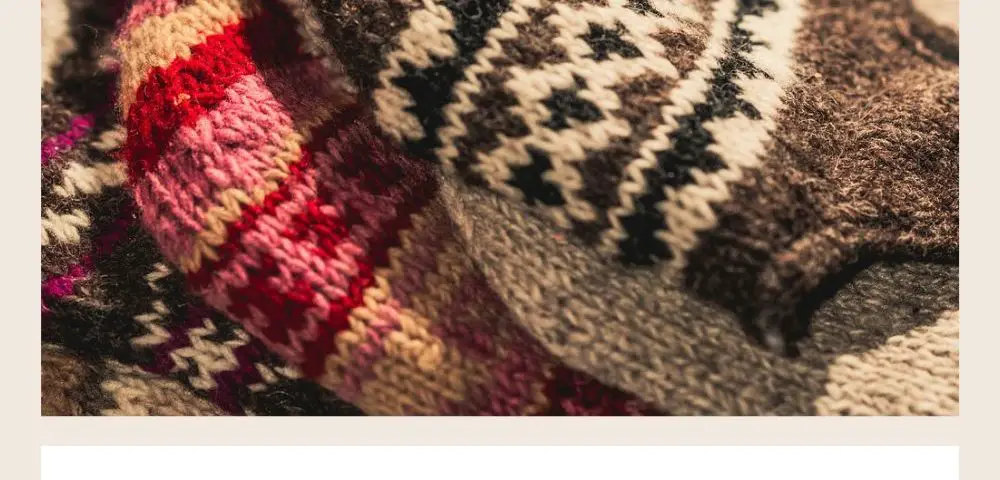Written by Ron Brown
When I was a child, my folks heated with wood. We had a wood stove downstairs and no ceiling registers whatsoever — meaning zero heat upstairs. In winter, mama would tuck us in bed and set a glass of water on the nightstand. In the morning, the water would be frozen. Brrr.
Children were tucked into bed in pairs, not alone. Flannel bed-sheets were SOP (standard operating procedure). But today, as I recently discovered, good quality sheets are prohibitively expensive. As an alternative, I’ve always thought you could cut the sleeves off a man’s flannel shirt and trim the remaining material so as to produce a piece of cloth 16″ x 48″. Five pieces would make a sheet for a single bed. And a Goodwill Store or Salvation Army Store should be a good source of pre-owned flannel shirts.
Please know that natural fabrics (cotton and wool) are much warmer than synthetics (rayon, nylon, polyester).
Everybody in your house should have wool socks (quickly located in the men’s sporting goods department) as well as “slipper socks” — wool socks with a plastic or leather sole sewn in. Slipper socks are great for padding around the house. Also, please know that the felt liners for snowmobile boots make excellent house slippers on cold floors.
Long underwear. Thermal underwear made with merino wool is the warmest and most expensive. (“Merino” is a breed of sheep that were a Spanish monopoly for centuries.) But even the cheapest long johns from the discount store are better on your legs than dungarees alone. And don’t forget lined leggings for the ladies.
Vests come in all fabrics and qualities. I once bought a down-filled vest in Canada made with quilted nylon and wore it for years. It broke my heart when the zipper finally gave out. I loved that thing.
A wool “watch cap” or beanie is a must-have item. I know an elderly couple who, when tent-camping in a state park, wear watch caps to bed every night without fail. In the summer.
Don’t forget your turtleneck sweater. Plus your scarf (to wrap around your neck and tuck under the lapels of your coat). This is all good stuff to help keep you warm.
As a kid, my folks packed me off to a one-room schoolhouse wearing a wool jacket. That’s what most everybody wore. Sometimes, outside on recess, we swapped coats. And one boy had a corduroy coat. Wow! It really cut the wind. I was very envious of that coat. Not as good as leather but almost. And, both then and now, please know that mittens are warmer than gloves.
A frying pan can be used as a bed warmer. Embers (glowing coals) are picked up with tongs from the wood stove or fireplace and placed in the frying pan (not a Teflon pan, thanks). The cover is put on the frying pan, the blankets are turned back on the bed, and the “bed warmer” is rubbed around on the bedding. Making it toasty warm. That’s how great-great grandpa did it and I’m sure it would still work today. Just be careful about burning down the house.
Long hair (and beards) keep you warm (a haircut in January will prove the point).
Hot water bottles (you’ll find them in a drug store) were grandma’s equivalent of electric heating pads.
Heating water to make a cup of coffee, then letting the unused water cool back down in the teakettle, is wasteful. A thermos bottle solves that one.
Scatter rugs for icy floors, ear muffs, flannel nightgowns, sleeping with your socks on . . .
When all else fails, erect a tent in the living room. It means less space to heat. But it also requires thinking about your diet. Beans are not good.
About the Author
I’m a retired engineer. I live in the countryside in upstate New York (not to be confused with New York City). My only real claim to fame is a series of eight books on Amazon entitled “The Non-Electric Lighting Series.” Each book in the series is available in both Kindle and paper format. The series has been well received. Whenever I’m feeling sorry for myself I review the readers’ comments. And I always come away smiling. Gee, maybe I’m not such a bad guy after all.
If you found this article interesting or helpful, please consider helping us out (without costing you anything)! We are an affiliate of Amazon.com, which means we received a small commission if you click through one of our Amazon links when you shop, at totally no cost to you. This helps keep the lights on at the blog. Thanks!
Image by Till Voigt from Pixabay


